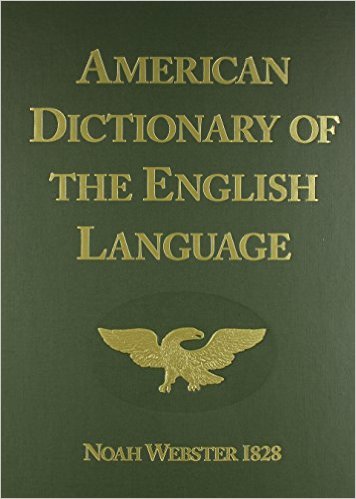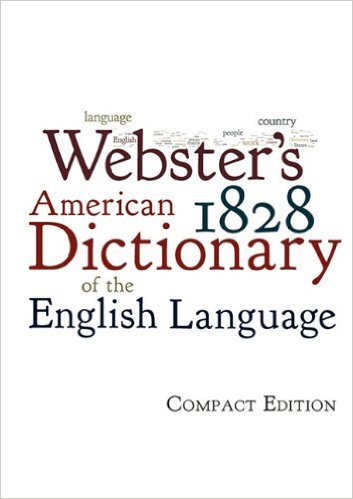|
Search, browse, and study this dictionary to learn more about the early American, Christian language. 
 1828.mshaffer.com › Word [basalt]
1828.mshaffer.com › Word [basalt]
BASALT', n. bazalt'. [Pliny informs us that the Egyptians found in Ethiopia, a species of marble, called basaltes, of an iron color and hardness, whence it received its name. Nat.Hist.Lib.36.Ca.7. But according to Da Costa, that stone was not the same which now bears the name of basalt. Hist. of Fossils.p.263. If named from its color, it may be allied to the Fr. basane, tawny. Lunier refers it to the Ethiopic basal, iron, a word I cannot find.] A dark, grayish black mineral or stone, sometimes bluish or brownish black, and when withered,the surface is grayish or reddish brown. It is amorphous, columnar, tabular or globular. The columnar form is straight or curved, perpendicular or inclined, sometimes nearly horizontal; the diameter of the columns from three 47inches to three feet, sometimes with transverse semi-spherical joints, in which the convex part of one is inserted in the concavity of another. The forms of the columns generally are pentagonal, hexagonal, or octagonal. It is sometimes found also in rounded masses, either spherical, or compressed and lenticular. These rounded masses are sometimes composed of concentric layers, with a nucleus, and sometimes of prisms radiating from a center. It is heavy and hard. The pillars of the Giant's causey in Ireland, composed of this stone and exposed to the roughest sea for ages, have their angles as perfect as those at a distance from the waves. The English miners call it cockle; the German, shorl,or shoerl. It is called by Kirwan, Figurate Trap, from its prismatic forms.
|
Evolution (or devolution) of this word [basalt]
| 1828 Webster | 1844 Webster | 1913 Webster |
|---|
BASALT', n. bazalt'. [Pliny informs us that the Egyptians found in Ethiopia, a species of marble, called basaltes, of an iron color and hardness, whence it received its name. Nat.Hist.Lib.36.Ca.7. But according to Da Costa, that stone was not the same which now bears the name of basalt. Hist. of Fossils.p.263. If named from its color, it may be allied to the Fr. basane, tawny. Lunier refers it to the Ethiopic basal, iron, a word I cannot find.] A dark, grayish black mineral or stone, sometimes bluish or brownish black, and when withered,the surface is grayish or reddish brown. It is amorphous, columnar, tabular or globular. The columnar form is straight or curved, perpendicular or inclined, sometimes nearly horizontal; the diameter of the columns from three 47inches to three feet, sometimes with transverse semi-spherical joints, in which the convex part of one is inserted in the concavity of another. The forms of the columns generally are pentagonal, hexagonal, or octagonal. It is sometimes found also in rounded masses, either spherical, or compressed and lenticular. These rounded masses are sometimes composed of concentric layers, with a nucleus, and sometimes of prisms radiating from a center. It is heavy and hard. The pillars of the Giant's causey in Ireland, composed of this stone and exposed to the roughest sea for ages, have their angles as perfect as those at a distance from the waves. The English miners call it cockle; the German, shorl,or shoerl. It is called by Kirwan, Figurate Trap, from its prismatic forms. |
BA-SALT', n. [bazalt'; Pliny informs us that the Egyptians found in Ethiopia, a species of marble, called basaltes, of an iron color and hardness, whence it received its name. Nat. Hist. lib. 36, ca. 7. But according to Da Costa, that stone was not the same which now bears the name of basalt. Hist. of Fossils, p. 263. If named from its color, it may be allied to the Fr. basané, tawny. Lunier refers it to the Ethiopic basal, iron, a word I cannot find.]A dark, grayish black mineral or stone, sometimes bluish or brownish black, and when weathered, the surface is grayish or reddish brown. It is amorphous, columnar, tabular or globular. The columnar form is straight or curved, perpendicular or inclined, sometimes nearly horizontal; the diameter of the columns from three inches to three feet, sometimes with transverse semispherical joints, in which the convex part of one is inserted in the concavity of another. The forms of the columns generally are pentagonal, hexagonal, or octagonal. It is sometimes found also in rounded masses, either spherical, or compressed and lenticular. These rounded masses are sometimes composed of concentric layers, with a nucleus, and sometimes of prisms radiating from center. It is heavy and hard. The pillars of the Giant's Causey in Ireland, composed of this stone, and exposed to the roughest sea for ages, have their angles as perfect as those at a distance from the waves. The English miners call it cockle; the German, shorl, or shœrl. It is called by Kirwan, Figurate Trap, from its prismatic forms. – Kirwan. Jameson. Cleaveland. |
Ba*salt"
- A rock of igneous
origin, consisting of augite and triclinic feldspar, with grains of
magnetic or titanic iron, and also bottle-green particles of olivine
frequently disseminated.
- An imitation, in pottery, of natural basalt; a
kind of black porcelain.
|
| 1828 Webster | 1844 Webster | 1913 Webster |
|---|
Thank you for visiting!
- Our goal is to try and improve the quality of the digital form of this dictionary being historically true and accurate to the first American dictionary. Read more ...
- Below you will find three sketches from a talented artist and friend depicting Noah Webster at work. Please tell us what you think.
Divine Study
 
Divine Study
|
Window of Reflection
 
Window of Reflection
|
Enlightening Grace
 
Enlightening Grace
|
159
|
927 |
110
|
1010 |
183
|
1035 |

Basalt BASALT', noun bazalt'. [Pliny informs us that the Egyptians found in Ethiopia, a species of marble, called basaltes, of an iron color and hardness, whence it received its name. Nat.Hist.Lib.36.Ca.7. But according to Da Costa, that stone was not the same which now bears the name of basalt Hist. of Fossils.p.263. If named from its color, it may be allied to the Fr. basane, tawny. Lunier refers it to the Ethiopic basal, iron, a word I cannot find.] A dark, grayish black mineral or stone, sometimes bluish or brownish black, and when withered, the surface is grayish or reddish brown. It is amorphous, columnar, tabular or globular. The columnar form is straight or curved, perpendicular or inclined, sometimes nearly horizontal; the diameter of the columns from three inches to three feet, sometimes with transverse semi-spherical joints, in which the convex part of one is inserted in the concavity of another. The forms of the columns generally are pentagonal, hexagonal, or octagonal. It is sometimes found also in rounded masses, either spherical, or compressed and lenticular. These rounded masses are sometimes composed of concentric layers, with a nucleus, and sometimes of prisms radiating from a center. It is heavy and hard. The pillars of the Giant's causey in Ireland, composed of this stone and exposed to the roughest sea for ages, have their angles as perfect as those at a distance from the waves. The English miners call it cockle; the German, shorl, or shoerl. It is called by Kirwan, Figurate Trap, from its prismatic forms. |

|
| Hard-cover Edition |
364 |
 |
535 |
|
| Compact Edition |
343 |
 |
236 |
|
| CD-ROM |
298 |
 |
191 |
|
* As a note, I have purchased each of these products. In fact, as we have been developing the Project:: 1828 Reprint, I have purchased several of the bulky hard-cover dictionaries. My opinion is that the 2000-page hard-cover edition is the only good viable solution at this time. The compact edition was a bit disappointing and the CD-ROM as well. |
| [ + ] |
| Add Search To Your Site |
|
|
|
 1828.mshaffer.com › Word [basalt]
1828.mshaffer.com › Word [basalt]
